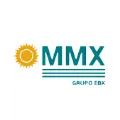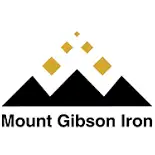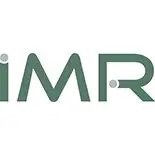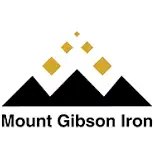
EXPLORATION OF REDMUD
Introduction:
Red mud, now more frequently termed bauxite residue, is an industrial waste generated during the processing of bauxite into alumina using the Bayer process. It is composed of various oxide compounds, including the iron oxides which give its red colour. Over 95% of the alumina produced globally is through the Bayer process;
Due to this high level of production and the material’s high alkalinity, it can pose a significant environmental hazard and storage problem. As a result, significant effort is being invested in finding better methods for dealing with it such as waste to create useful materials or cement and concrete . Less commonly, this material is also known as bauxite tailings, red sludge, or alumina refinery residues.
The alumina content of the bauxite used is normally between 45% and 50%, but ores with a wide range of alumina contents can be used. The aluminium compound may be present as gibbsite (Al(OH)3), boehmite (γ-AlO(OH)) or diaspore (α-AlO(OH)). The residue invariably has a high concentration of iron oxide which gives the product a characteristic red colour. A small residual amount of the sodium hydroxide used in the process remains with the residue, causing the material to have a high pH/alkalinity, normally >12.
Reaction involves during Alumina extraction by Bayer Processes:
Al2O3 (Available Aluminium) + 2 NaOH → 2 NaAlO2 + H2O
2 NaOH + SiO2 → Na2SiO3 + H2O
2 NaAlO2 + 3 H2O + CO2 → 2 Al(OH)3 + Na2CO3
2 H2O + NaAlO2 → Al(OH)3 + NaOH
2 Al(OH)3 → Al2O3 ( Recovered Alumina) + 3H2O


SELECTING AN ANALYTICAL METHOD:
In order to select an analytical method intelligently, it is essential to define clearly the nature of the analytical problem. In general, the following points have considered while choosing an instrument for measurement.
Selecting Parameters :
| Parameter | Method selection(s) |
| Fe2O3 | Wet Chemical |
| Al2O3 | Wet Chemical |
| TiO2 | Instruments/Wet Chemical |
| SiO2 | Wet Chemical |
| Na2O | Instruments |
| LOI | Instruments |
XRD Study of Red Mud:
Further study of the other elements & structure of Alumina .We were doing various Phase analysis by Bruker D2 Phaser and findings as follows-

Glossary:
H = Hematite ,Go = Goethite, G = Gibbsite ,R = Rutile , B = Boehmite , M = Magnesium calcite
Most probable Phase Composition Cancrinite 0.52% , Sodalite 4.14 % , Goethite 33.33 %, Quartz 0.78% , Magnesium calcite 5.49% , Kaolinite 1.46 % , Gibbsite 1.93 % , Rutile 1.93 % , Boehmite 10.92 % , Hematite 39.51 %

Most probable Phase Composition Anatase 16.73% , Sodalite 8.19 % , Goethite 21.81 %, Quartz 4.78% , Calcite 0.56% , Kaolinite 1.46 % , Gibbsite 2.22 % , Rutile 1.93 % , Boehmite 9.97% , Hematite 28.32%,Fedorite 10.06%
The data obtained (Sample – 01 & Sample – 02) after phase analysis and subsequent quantification using Powder X Ray Diffraction of the red mud clearly indicates that Al was not completely extracted during the Bayer’s process. The residual Al is present mainly as Boehmite in the red mud and a small amount of Gibbsite is also present. Altogether these Al bearing phases account for around 7-8% of Alumina which was not extracted. We also looked for the presence of Diaspore (α AlO(OH)) although it was not identified in the PXRD scan which may be due to the presence of the said phase at a very low concentration.
Furthermore, there is some difference between the silica content obtained in wet classical analysis and the PXRD data. Although the PXRD is a semi quantitative method the considerable difference between the results obtained in the two methods can be attributed to the presence of amorphous silica in the samples which is not detectable in the PXRD method.
Chemical analysis : Parameter wise method details with comparison of Results :
Iron content Analysis :
Potassium dichromate (VI) solution turns green as it reacts with the iron (II) ions, and there is no way you could possibly detect the color change when you have one drop of excess orange solution in a strongly colored green solution. With potassium dichromate (VI) solution we have to use a separate indicator, known as a redox indicator.
Cr2O2−7+14H++6e−→ 2Cr3++7H2O
Cr2O7−2+14H+ +6Fe2+→ 2Cr3++7H2O+6Fe3+
You can see that the reacting proportions are 1 mole of dichromate (VI) ions to 6 moles of iron (II) ions. Once you have established that, the titration calculation is again going to be just like any other one.
| Sample code | Lab I Results | Lab II Results | Lab III Results |
| Sample – 01 | 51.61% | 51.46% | 51.40% |
| Sample – 02 | 44.13% | 44.34% | 44.28% |
Silica content Analysis :
Entire process done by gravimetric method. Final reactions are as follows.
4HF(aq)+SiO2(s)→SiF4(g)↑+2H2O(l)
Hydrofluoric acid (HF) reacts with silicon dioxide to produce silicon tetrafluoride ( gas – Volatile) and water.
| Sample code | Lab I Results | Lab II Results | Lab III Results |
| Sample – 01 | 6.08% | 5.95% | 5.80% |
| Sample – 02 | 7.19% | 7.13% | 7.21% |
Alumina (Al2O3) content Analysis :
Methods of aluminum determination, and complex stability constant for Al3+ is so high, that EDTA titration is tempting. Of several possible solutions, back titration proves to be the best approach. EDTA and aluminum are allowed to react in the hot solution for several minutes, then excess EDTA can be fast and easily titrated with Zn2+.
If solution was prepared by dissolving sample containing Al in a strong acid, it may have very low pH. Buffer we use during the determination pH 5.5 Sodium acetate – is relatively far from its maximum buffer capacity.

| Sample code | Lab I Results | Lab II Results | Lab III Results |
| Sample -01 | 17.17% | 16.96% | 17.00% |
| Sample – 02 | 16.56% | 16.38% | 16.45% |
Sodium Oxide (Na2O) content Analysis :
The flame photometer A traditional and simple method for determining sodium and potassium in liquid involves the technique of emission flame photometry. This relies on the principle that an alkali metal salt drawn into a non-luminous flame will ionise, absorb energy from the flame and then emit light of a characteristic wavelength as the excited atoms decay to the unexcited ground state. In this practical (Experiment A) you will calibrate a flame photometer using standard sodium and potassium solutions then measure the Na+ and K+ concentrations.
| Sample code | Lab I Results | Lab II Results | Lab III Results |
| Sample/01 | 4.36% | 4.55% | 4.41% |
| Sample/02 | 4.70% | 4.88% | 4.78% |
Titanium Oxide (TiO2) content Analysis :
Reaction of yellow colour development of TiO2 determination.
TiO2 + H2SO4 (Conc) → TiOSO4
TiOSO4 + 5H2O ↔[Ti(OH)3(H2O)3]+ + HSO4–
[Ti(OH)3(H2O)3]+ + H2O2 ↔ [Ti(O2)(OH)(H2O)3]+ + H2O
| Sample code | Lab I Results | Lab II Results | Lab III Results |
| Sample/01 | 3.88% | 3.96% | 3.91% |
| Sample/02 | 16.18% | 16.04% | 16.11% |
Loss of Ignition content :
Weight accurately 1 g of sample into a previously weigher1 platinum crucible., then at a gradually increasing temperature. Finally ignite at 1000°C for one hour. Cool in a desiccator containing preferably magnesium perchlorate and weigh. Repeat the heating till constant weight.
Loss on Ignition (LOI) – Determining the Total Volatile Content
Determine % loss on ignition by dividing “initial loss” by initial weight of sample and multiply by 100
| Sample code | Lab I Results | Lab II Results | Lab III Results |
| Sample 01 | 12.64% | 12.43% | 14.00% |
| Sample 02 | 9.24% | 9.09% | 10.58% |
Objectives:


Chief Operation, FAMD, Tata Steel Limited..


Sr. General Manager,, Emirates Trading Agency L.L.C..


Mines Manager, Hindustan Zinc Limited, a Vedanta Company.


General Manager, Stevin Rock L.L.C..


Executive Vice President (Works),, DCW Limited.


AVP – Coal Quality & Sales Compliance Head,, PT Indo Tambangraya Megah Tbk (BANPU).


Laboratory Head, MMX.


Shipping Administrator, Mount Gibson Iron Limited.


Senior Director – Asia Pacific Iron Ore Sales,, Cliffs Natural Resources Pty Ltd..

Posted on April 30 2024 By Mitra S.K ADMIN
Read More
Posted on April 29 2024 By Mitra S.K ADMIN

Posted on December 30 2023 By Mitra S.K ADMIN

Posted on December 30 2023 By Mitra S.K ADMIN

Posted on December 30 2023 By Mitra S.K ADMIN

Posted on December 27 2023 By Mitra S.K ADMIN

Posted on December 27 2023 By Mitra S.K ADMIN

Posted on December 27 2023 By Mitra S.K ADMIN

Posted on December 27 2023 By Mitra S.K ADMIN

Posted on December 27 2023 By Mitra S.K ADMIN

Posted on December 27 2023 By Mitra S.K ADMIN

Posted on December 27 2023 By Mitra S.K ADMIN

Posted on December 26 2023 By Mitra S.K ADMIN

Posted on December 09 2022 By Mitra S.K ADMIN

Posted on December 02 2022 By Mitra S.K ADMIN

Posted on December 02 2022 By Mitra S.K ADMIN

Posted on December 02 2022 By Mitra S.K ADMIN

Posted on December 02 2022 By Mitra S.K ADMIN

Posted on December 02 2022 By Mitra S.K ADMIN

Posted on December 02 2022 By Mitra S.K ADMIN

Posted on December 02 2022 By Mitra S.K ADMIN

Posted on December 02 2022 By Mitra S.K ADMIN

Posted on December 01 2022 By Mitra S.K ADMIN

Posted on December 01 2022 By Mitra S.K ADMIN

Posted on December 01 2022 By Mitra S.K ADMIN

Posted on December 01 2022 By Mitra S.K ADMIN

Posted on November 30 2022 By Mitra S.K ADMIN

Posted on November 30 2022 By Mitra S.K ADMIN

Posted on November 30 2022 By Mitra S.K ADMIN

Posted on November 30 2022 By Mitra S.K ADMIN

Posted on November 30 2022 By Mitra S.K ADMIN

Posted on September 27 2022 By Mitra S.K ADMIN






